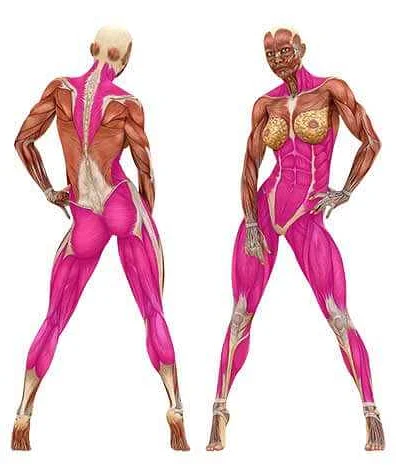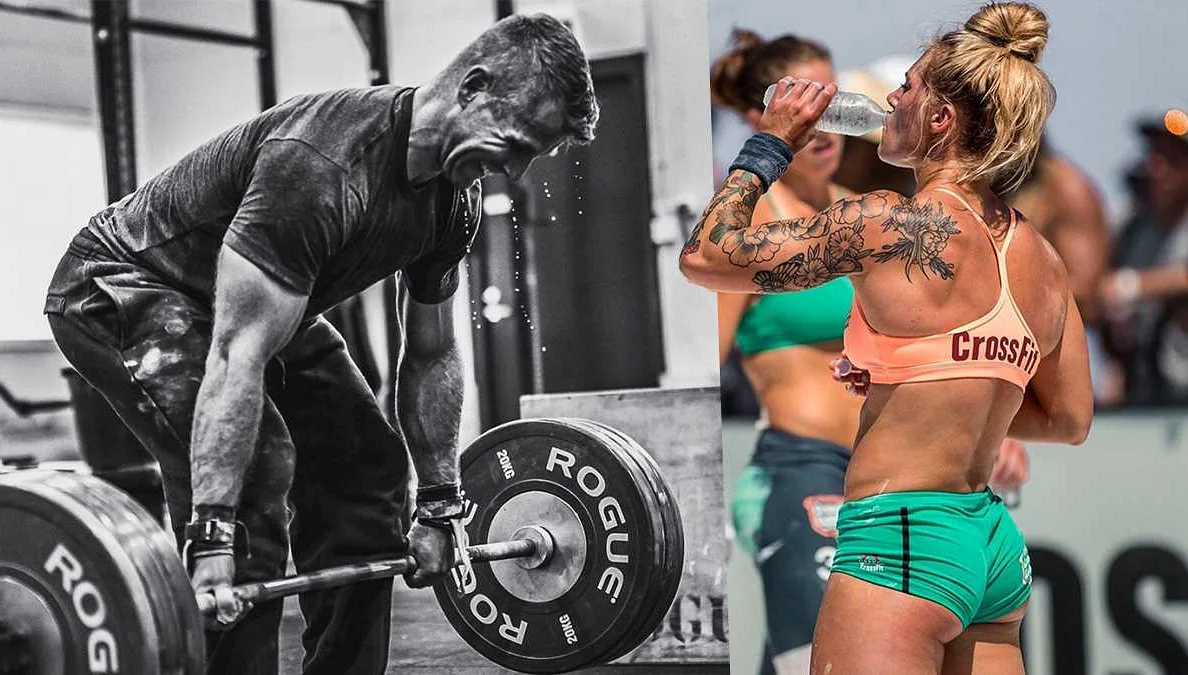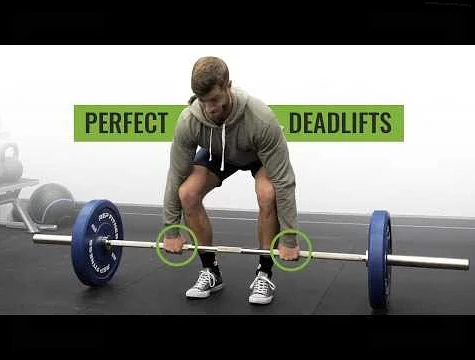What Muscles Does the Deadlift Develop?
Содержимое
Learn what a deadlift is and how it can help you build strength in your back, glutes, hamstrings, and core muscles. Discover the benefits and proper technique for performing this compound exercise.
Deadlifts are one of the most effective and compound exercises you can include in your workout routine. They target multiple muscle groups and offer numerous benefits for your overall strength and physique. Whether you’re a beginner or an experienced lifter, incorporating deadlifts into your training can help you reach your fitness goals.
Muscle Groups Worked
Deadlifts primarily target the muscles in your lower body, including the glutes, hamstrings, quadriceps, and calves. These muscles are responsible for powerful movements such as squatting, jumping, and running. Additionally, deadlifts engage your core muscles, including the abdominals and lower back, which help stabilize your spine during the lift.
Benefits of Deadlifts
1. Increased strength: Deadlifts are a compound exercise that engages multiple muscle groups simultaneously, leading to overall strength gains. As you progressively increase the weight, your muscles adapt and grow stronger.
2. Improved posture: Deadlifts strengthen your back muscles, helping to improve your posture and reduce the risk of back pain. By promoting proper alignment of the spine, deadlifts can also enhance your overall body mechanics and prevent injuries.
3. Enhanced functional fitness: Deadlifts mimic real-life movements like picking up heavy objects from the ground. By training this movement pattern, you can improve your functional fitness and perform everyday tasks more efficiently.
4. Increased fat burning: Deadlifts are a demanding exercise that requires a high amount of energy. Performing deadlifts regularly can help increase your metabolic rate and promote fat loss.
Whether your goal is to build strength, improve your physique, or enhance your overall fitness, deadlifts are an essential exercise to include in your training regimen. Start with light weights and focus on proper form to maximize the benefits and minimize the risk of injury. Consult with a fitness professional if you’re unsure about your technique or need guidance on incorporating deadlifts into your routine.
The Benefits of Deadlifts: A Beginner’s Guide

Deadlifts are one of the most effective exercises you can incorporate into your workout routine. Not only do they work multiple muscle groups at once, but they also offer a wide range of benefits for both beginner and advanced lifters.
Here are some of the key benefits of deadlifts:
- Increased strength: Deadlifts are a compound exercise that engage various muscle groups, including the back, legs, and core. By regularly incorporating deadlifts into your routine, you can build overall strength and improve your performance in other exercises.
- Improved posture: Deadlifts primarily target the muscles in the posterior chain, which include the erector spinae, glutes, and hamstrings. Strengthening these muscles can help improve your posture and reduce the risk of lower back pain.
- Enhanced grip strength: As deadlifts require you to hold onto a heavy barbell or weight, they are an excellent exercise for improving grip strength. This can be beneficial for everyday activities that require grip strength, such as carrying groceries or opening jars.
- Increased muscle mass: Deadlifts are a compound exercise that engage multiple muscle groups simultaneously. By consistently performing deadlifts, you can stimulate muscle growth and development throughout your entire body.
- Fat burning: Deadlifts are a highly demanding exercise that requires a lot of energy. This makes them an effective exercise for burning calories and promoting fat loss. Including deadlifts in your workout routine can help you reach your weight loss goals faster.
- Improved functional strength: Deadlifts mimic everyday movements, such as lifting heavy objects from the ground. By regularly performing deadlifts, you can improve your functional strength, making it easier to perform daily tasks and reducing the risk of injury.
It’s important to note that proper form and technique are crucial when performing deadlifts to prevent injury. If you’re a beginner, consider working with a qualified trainer or watching instructional videos to ensure you’re performing the exercise correctly.
In conclusion, deadlifts offer a wide range of benefits for beginners and advanced lifters alike. From increased strength and muscle mass to improved posture and functional strength, incorporating deadlifts into your routine can help you reach your fitness goals and improve your overall health and well-being.
Why Deadlifts Are Worth Your Time

Deadlifts are one of the most effective exercises you can incorporate into your workout routine. They offer numerous benefits and work multiple muscle groups simultaneously, making them a valuable addition to any fitness regimen.
1. Build overall strength: Deadlifts are a compound exercise that engage a wide range of muscles, including your legs, back, core, and arms. By working these major muscle groups together, deadlifts help to build total body strength.
2. Improve posture and stability: Deadlifts require you to engage your core and maintain a neutral spine throughout the movement. Regularly performing deadlifts can help improve your posture and develop core stability, reducing the risk of back pain and injuries.
3. Increase muscle mass: Deadlifts are a highly effective exercise for muscle growth, particularly in the lower body. They target your glutes, hamstrings, and quadriceps, helping to develop strong and shapely legs.
4. Enhance athletic performance: Deadlifts improve power, explosiveness, and overall performance. They train your body to generate force from the ground up, which can translate to improved performance in sports such as sprinting, jumping, and throwing.
5. Boost metabolism and burn fat: Deadlifts are a demanding exercise that require significant effort and energy. Performing deadlifts can help increase your metabolic rate, leading to greater calorie burn both during and after your workout.
In conclusion, deadlifts are a highly beneficial exercise that offer a wide range of advantages. Whether you’re looking to build strength, improve your physique, enhance athletic performance, or burn fat, incorporating deadlifts into your workout routine is worth your time.
The Muscles You Work When Deadlifting

Deadlifts are one of the most effective exercises for targeting a wide range of muscles in your body. When performing a deadlift, you primarily engage your lower back, hamstrings, glutes, and quadriceps. However, many other muscles in your upper body and core also play a role in this compound exercise.
Here is a breakdown of the main muscles worked during a deadlift:
| Lower Back | Erector spinae, which includes the spinal erectors |
| Hamstrings | Biceps femoris, semitendinosus, semimembranosus |
| Glutes | Gluteus maximus, gluteus medius, gluteus minimus |
| Quadriceps | Rectus femoris, vastus lateralis, vastus medialis, vastus intermedius |
| Upper Back | Trapezius, rhomboids, and rear deltoids |
| Core | Abdominal muscles, including the rectus abdominis and obliques |
| Forearms | Flexor muscles, including the flexor digitorum profundus and flexor pollicis longus |
By engaging these muscles in a deadlift, you not only strengthen and develop them but also improve your overall functional strength. Deadlifts are a compound exercise that mimic real-life movements, such as lifting heavy objects from the ground, making them a valuable addition to any workout routine.
Deadlifts for Overall Strength
The deadlift is one of the best exercises you can do to improve your overall strength. It is a compound exercise that targets multiple muscle groups and works them in a coordinated manner. By performing deadlifts regularly, you can strengthen your entire body and develop functional strength that can translate to improved performance in various activities and sports.
Here are some reasons why deadlifts are beneficial for overall strength:
- Full-body workout: Deadlifts work multiple muscle groups, including your legs, back, core, and arms. By engaging these muscles together, deadlifts require a significant amount of strength and coordination, making it a highly effective full-body exercise.
- Strengthens posterior chain: The deadlift primarily targets the posterior chain muscles, which include the hamstrings, glutes, and lower back. Strengthening these muscles not only improves your overall strength but also helps prevent injuries and improves posture.
- Functional movement: Deadlifts mimic the movement patterns we use in our daily lives, such as lifting heavy objects from the ground. By training this movement pattern, you can enhance your ability to perform everyday tasks with ease and reduce the risk of injuries.
- Increases grip strength: Deadlifts require a strong grip to hold onto the barbell. By performing deadlifts regularly, you can significantly increase your grip strength, which can have carryover benefits to other exercises and activities that require grip strength.
- Boosts overall performance: Deadlifts are a compound exercise that targets multiple muscle groups, making it an excellent exercise for improving overall strength and power. By including deadlifts in your workout routine, you can enhance your performance in other exercises and sports, such as squats, lunges, and athletic activities.
As with any exercise, it’s important to start with lighter weights and gradually increase the load as your strength improves. Proper form and technique are also crucial to avoid injuries. Consider working with a qualified trainer or coach who can guide you through the correct deadlift technique and help you design a well-rounded strength training program.